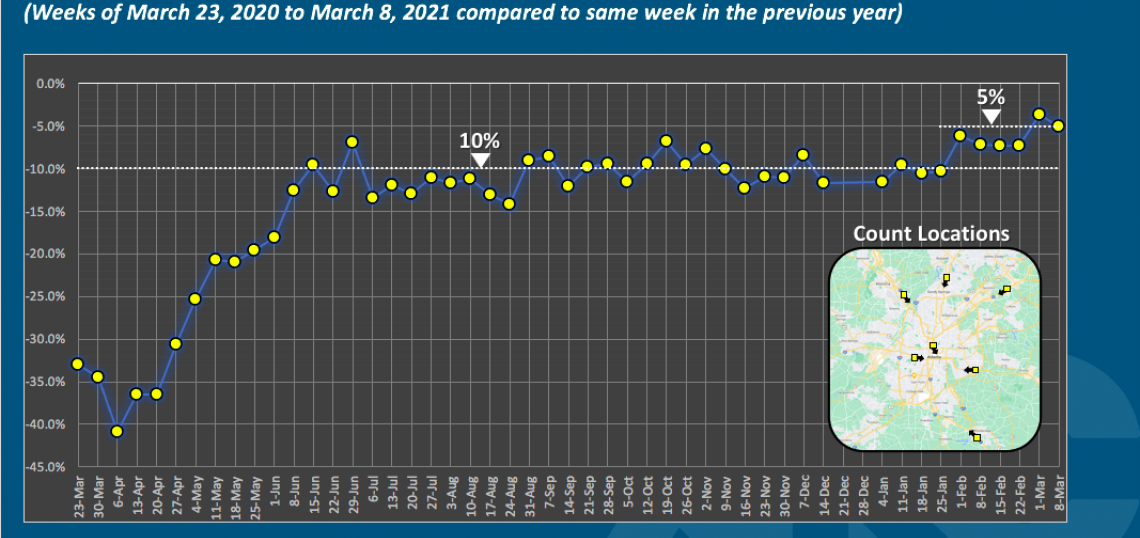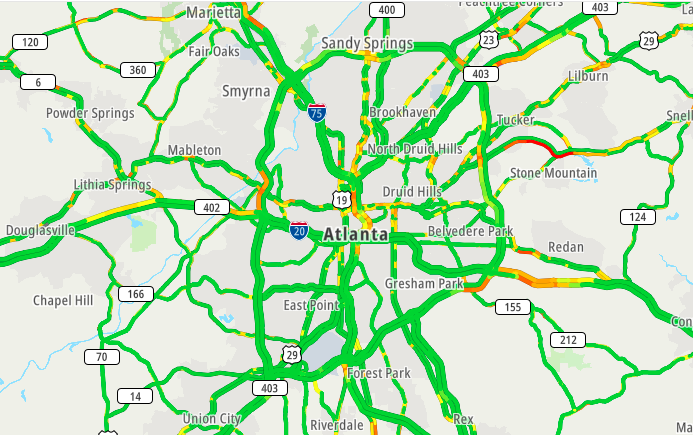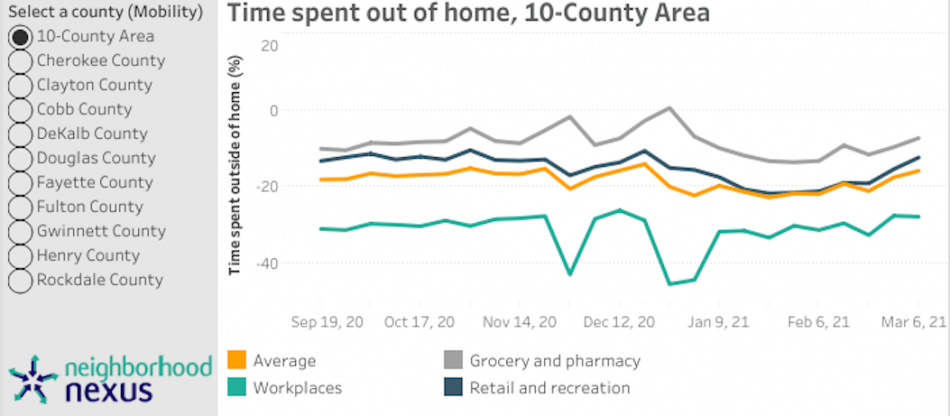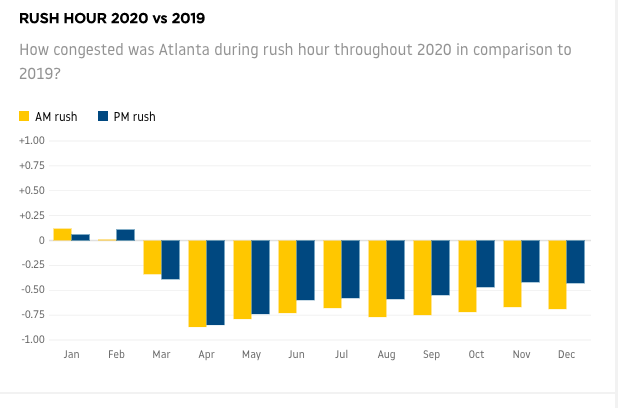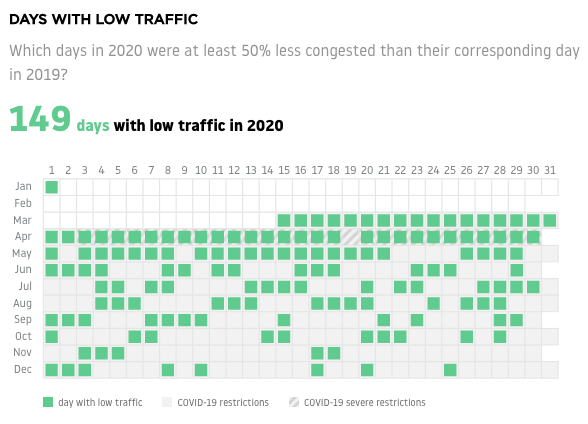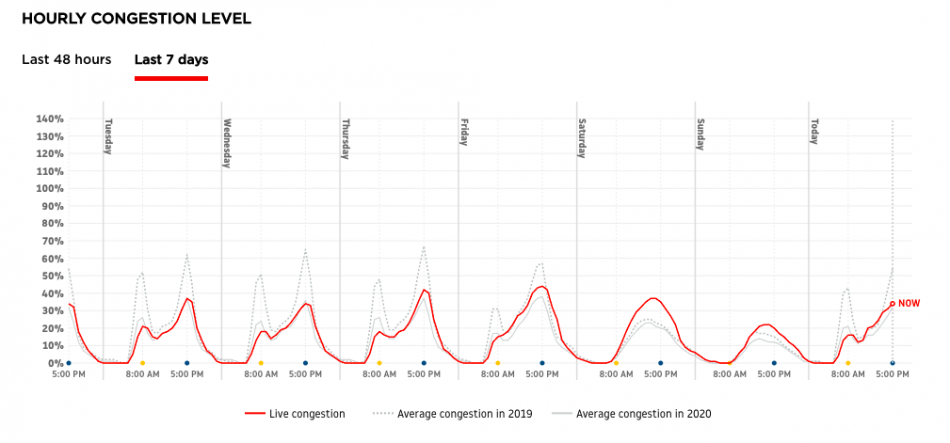One indelible image of the COVID-19 pandemic’s impact on cities around the world is the apocalyptically empty streets and freeways of March 2020. Atlanta was no exception.
A year ago today, Mayor Kiesha Lance Bottoms declared a COVID-19 state of emergency that prohibited gatherings of 250 or more people. (That was supposed to last two weeks, but by March 23, a stay-at-home order locking down all Atlantans was in place, and hopes the coronavirus would be a temporary inconvenience began to dissolve.)
Hundreds of thousands of Atlanta drivers got the mayor’s emergency memo and stayed off the metro’s streets and interstates, beginning March 16. The result? As one intrepid correspondent observed, the typically packed intown streets were all but empty in the 5 p.m. hour that Monday. A rush-hour trip from Buckhead to south downtown and back, for instance, could be accomplished in an inconceivable 28 minutes.
But a year later, how much of that reprieve from gridlock remains?
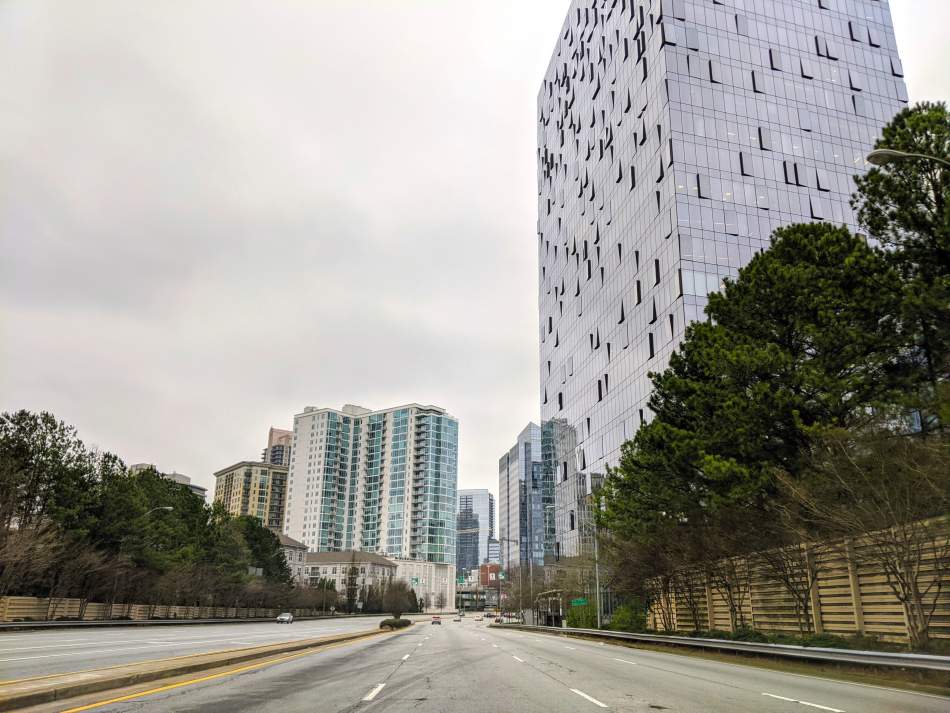 Central Buckhead, afternoon rush hour, March 16, 2020. Josh Green
Central Buckhead, afternoon rush hour, March 16, 2020. Josh Green
To get a handle on metro Atlanta’s traffic situation today, we tapped regional and local sources and other analysts for a glimpse at where the metro’s notorious snarl-ups stand a year into the pandemic. Traffic problems didn’t evaporate, but there are some encouraging signs—along with troubling ones.
Let’s begin, anecdotally, in Dunwoody, where the Perimeter area had become synonymous with rush-hour congestion—but also transit-oriented growth—prior to the plague.
During a Dunwoody City Council meeting last month, Perimeter CID officials shared that traffic had dipped by about 40 percent in March 2020, but then gradually climbed to above-average numbers from October to December.
A reprieve came again in January and February this year, as COVID-19 cases increased and traffic again declined, albeit slightly. (MARTA ridership in the district, however, remained 80 percent below normal levels, as of February.)
A quick check of traffic sore spots this week, just after 5 p.m. Monday, showed Perimeter traffic to be slow but moving, while other common-culprit bottlenecks such as the downtown Connector were up to their old ways, according to Google:
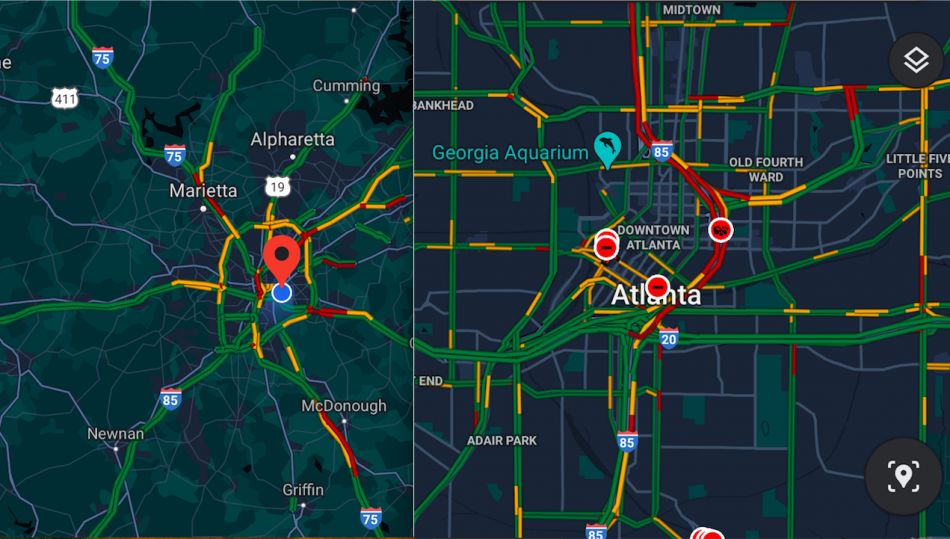 Traffic snarls across the region, left, and the city, right, in the 5 o' clock hour Monday. Google
Traffic snarls across the region, left, and the city, right, in the 5 o' clock hour Monday. Google
In what could be a sign of lower overall volumes, however, traffic flow by 6 p.m. Monday had unclogged across most of the region:
For a more scientific understanding, we reached out to the Atlanta Regional Commission, which has been tracking various aspects of COVID-19’s impact.
One telling report includes a “Time Spent Out of Home” chart for Atlanta’s 10 core counties.
This gives an idea how much people in the metro are still sheltering in place—and how the number of daily workplace commutes has edged up only slightly in the past six months:
The ARC chart jibes with other graphics Paul Donsky, the agency’s communications and marketing manager, pointed to.
Those include 2020 findings for metro Atlanta in the TomTom Traffic Index, a global compendium of city traffic data, which showed a nosedive in rush-hour congestion throughout the year:
Nonetheless, days that were considered “low traffic” had petered out considerably as merciless 2020 dragged on:
But traffic levels over the last week across metro Atlanta remain fairly close to 2020 trends and significantly below 2019 spikes (this past holiday weekend notwithstanding), per the TomTom data:
Meanwhile, the Georgia Department of Transportation has documented a steady rise in traffic volumes since the nadir in early April last year.
GDOT has been gathering data at seven highway checkpoints across the region, and according to their numbers, we're not too far behind where we started, at least in terms of freeway travel:
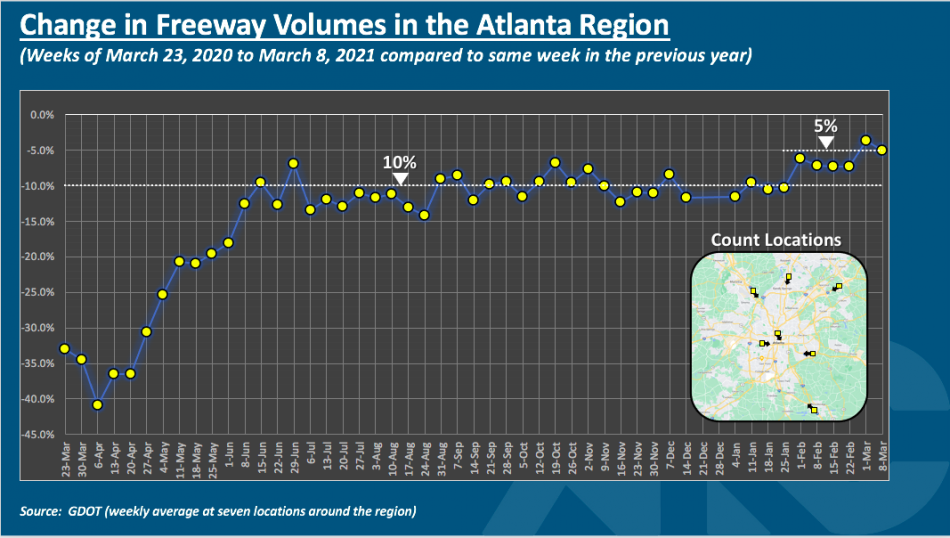 Georgia Department of Transportation
Georgia Department of Transportation
So that’s what the metro Atlanta traffic pros are saying. What are you seeing out there?
• New renderings provide closeup of Midtown highway-capping park vision (Urbanize Atlanta)




